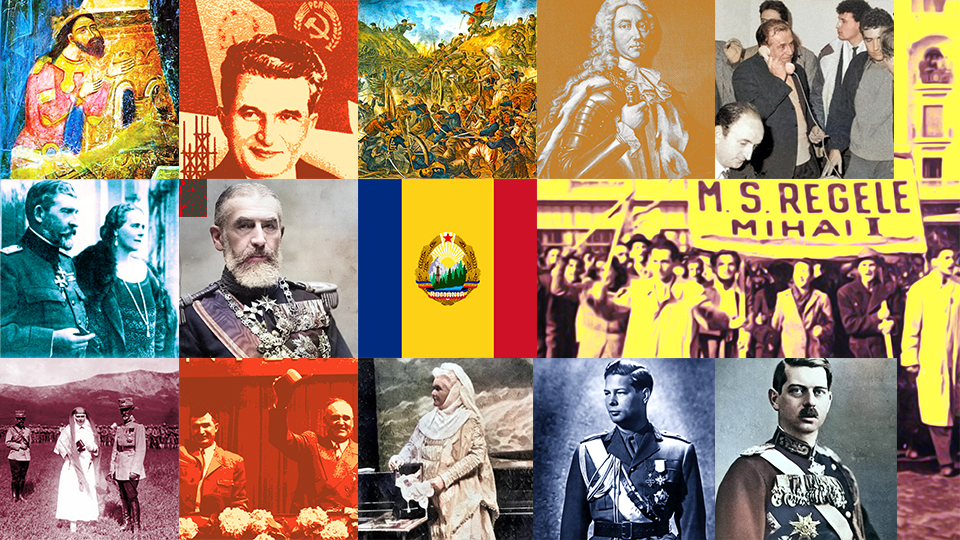Romania and the Bolshevik Revolution
The Romanian front during World War One at the time of the Russian Revolution of 1917.

Steliu Lambru, 25.01.2021, 14:00
Russian soldiers entered
Romanian territory during WWI as allies, following an agreement on 16th August
1916 when Romania joined the war alongside France, Britain and Russia. Russia’s
help did not arrive immediately and even when it did, it was weak and
unconvincing. The Romanian army was defeated and in December 1916 the
authorities were forced to leave the capital and take refuge in Moldovia. It wasn’t
until early 1917 that Russia sent in more significant reinforcement consisting
in the presence of 1 million soldiers. Romanian-Russian cooperation worked
well, also owing to the direct involvement of the French, and the Central Powers
were thus unable to penetrate the defence in 1917. However, the year would not
finish as promising as it began, on the contrary.
The revolutions in
Russia destroyed the morale of the Russian troops and the disintegration of the
Russian army endangered not only the front in the Carpathian Mountains, but
also the existing social order. When Lenin and his group triumphed and put in
place the Bolshevik system in November 1917, in Romania the situation got out
of control. The Russian soldiers were behaving not like allies, but like
enemies, and the Romanian army soon realised that they were at least as
dangerous as the German enemy. Through great effort, the Romanian army managed
to quell the rebellion of the Russian soldiers and stabilise the situation.
Historian Șerban Pavelescu from the Institute
of Political Studies, Defence and Military History is the editor of a book called Aliatul inamic (Enemy Ally) which
contains the memoirs of two Russian generals, Nikolai A. Monkevits and Aleksandr
N. Vinogradski. The two were on the Romanian front in 1917 and 1918 and
remember how Romania coped with the Bolshevik revolution:
Many of these troops were behind the frontline,
with a large group of Russian troops being located in the Nicolina area, near Iași.
The Bolshevik upheaval created there by the revolutionary committees set up after
October 1917 threatened the political and administrative structures of the
Romanian state. A conflict soon appeared, at the end of 1917 and the beginning of
1918, when the Romanian troops were eventually forced to step in against its former
ally in order to drive it away from Romanian territory. This would give rise in
1918 to genuine battles between the Romanian and the Russian troops, with the
former trying to prevent the latter from abandoning the front with the weapons
and the munition. Behind the front, the lack of discipline, the chaos and the revolutionary
turmoil transformed the Russian troops into bands of looters who destroyed everything
in their wake.
Some Russian soldiers perpetrated extreme acts
of violence, especially in Bessarabia, the present-day Republic of Moldova. Historian
Șerban Pavelescu explains:
These troops defeated and driven out by the Romanian troops by force would
cross the Prut river and unleash terror there. The intervention of the Romanian
troops in Bessarabia in March 1918 was nothing but an attempt to bring back
order at a time when the lives and property, not to mention the decisions of
the democratically elected structures of the Romanians living between the Prut
and the Dniestr rivers, were threatened by Bolshevik hegemonic ambitions.
The memoirs of the two Russian generals are full of details about how people
perceived the war and the changes taking place under their very eyes. Historian
Șerban Pavelescu:
There are many interesting details about the situation within the
Russian army at the time. We can understand how general Shcherbachev, the last commander of the Russian troops on
the Romanian front, ended up being protected from his own troops by a Romanian
infantry unit. The memoirs also describe how different ways were being looked
for to motivate the troops to continue fighting. The provisional government would
reluctantly accept to motivate its own troops and convince them to keep on
fighting, as it had promised to its western allies. As far as the Bolsheviks were
concerned, things were completely different, and they would be willing, as was
to be seen on the Romanian front, to make any compromise in order to retain the
power they had just conquered.
Despite this situation and the huge damage caused by
the Russians, historian
Șerban Pavelescu says the intervention of the Romanian army was decisive in the
case of many of the former. Some of them changed their views and gave up their
revolutionary ideas:
It is worth noting that
owing to the distance of the Romanian front from Moscow and the central
command, the way in which the Russian troops acted, even the example set by the
Romanian troops, who would not let themselves be contaminated by Bolshevism, the
level of defection and Bolshevisation among the Russian troops was the lowest
on the entire eastern front. Most of the troops who would go on to fight
alongside the Whites would be recruited from among those on the Romanian front.
I don’t just mean units made up of officers, non-commissioned officers and cadets,
but regular troops as well, who would join the White Army.
During WWI, Romania was forced to confront both the
enemy in front and the enemy behind its own lines, and the Bolshevik revolution
was the enemy it least expected.






























